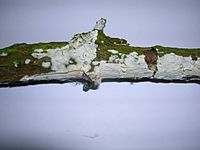Incertae sedis facts for kids

In taxonomy, the term incertae sedis (abbreviated inc. sed.) is used for a taxon when its broader relationship to other taxa is unknown. The first person who used the term in botany was probably Antoine-Laurent de Jussieu. In his book Genera Plantarum of 1789 he listed a few plantae incertae sedis.
Reasons why a taxon might be classified as incertae sedis include:
- The description is not detailed enough to permit a clear classification.
- A scientific publication about a taxon does not focus on its classification. The taxon is labeled incertae sedis, because the authors of the publication do not want to guess where the taxon belongs.
- Different researchers may have different opinions of where a taxon should be classed. Until the conflicts are resolved, the taxon is classed as incertae sedis.
Images for kids
-
New World vultures, such as the California condor, were placed incertae sedis within the class Aves until the recognition of the new order Cathartiformes.
-
Plumalina plumaria Hall, 1858 (6.3 cm tall), Upper Devonian of western New York State, US. Workers usually assign this organism to the hydrozoans (phylum Cnidaria, class Hydrozoa) or the gorgonarians (phylum Cnidaria, class Anthozoa, order Gorgonaria), but it is probably safest to refer to it as incertae sedis.
-
The Varanopids, a mysterious family of Tetrapods, had controversial relationships with other many land tetrapods. Paleolontologists have mostly assigned them in the past as Eupelycosaurian synapsids. Others have placed them as basal neodiapsids. A compromise is to place them as Amniota incertae sedis.
See also
 In Spanish: Incertae sedis para niños
In Spanish: Incertae sedis para niños



